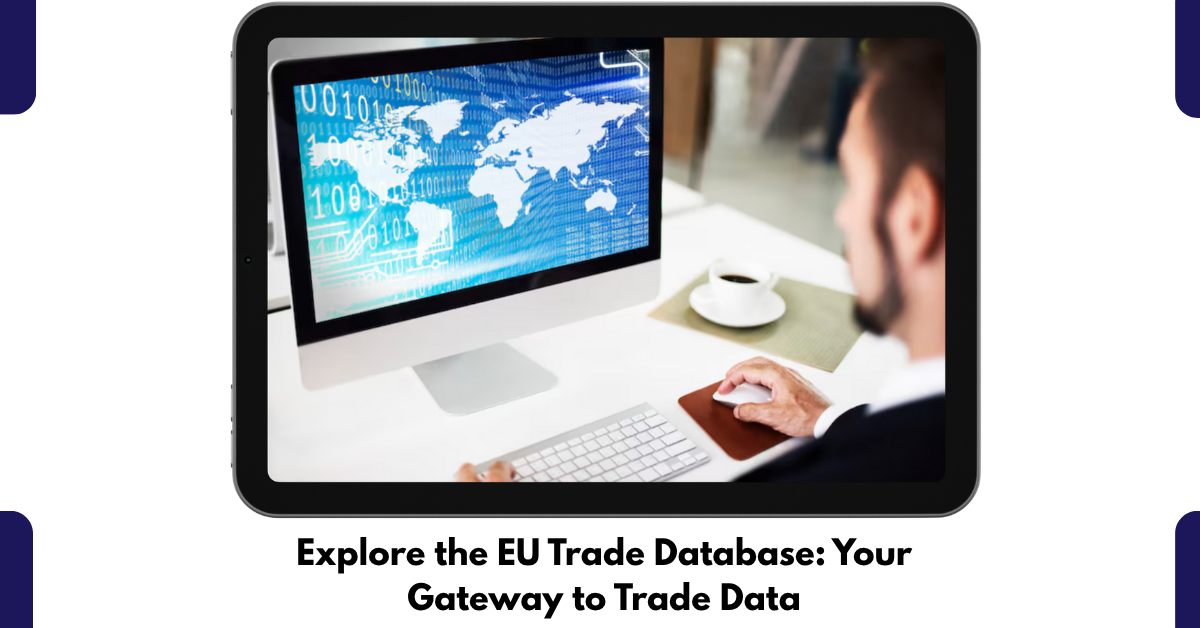Unlocking the Global Trade Puzzle
Data is ubiquitous in every industry as the world continues to shrink. Trade practitioners, policymakers, exporters as well as researchers do require validated, real-time insights right from the source that can easily be converted into strategies. The EU trade database is the center of the eu trade database that glows with light.
The EU trade database can be described as the trade database of the world. With depth, precision and transparency, the database performs analytics of trade patterns and trade flows, unlocking trade transactions while providing clear insights in trade.
Be it a small exporter in world trade, or a small niche marketer, or one of the 200,000 corporations in the world and small, this information can change the world. The world is symbolic to a richer save, and business is a world to explore.
Why the EU Trade Database Matters Today
A Treasure Trove of Verified Insights
Insufficient information with trade decisions is comparable to trying to navigate your way to a desired destination without a navigation system or a physical compass. The EU trade database pdf, therefore, is not just a content source, it is a guide in the world of business. It translates raw information from industry regulators, national statistical institutes and customs authorities into actionable insights about trade activities.
Part of this system is the Comext system that allows users to analyze trade on a deep level, providing even product level flows, and nuances of cross border trade, allowing users to view Europe’s trade as a detailed map. For users that deal with trade on a detailed level, this is a must have.
Building Interest Through Data Diversity
Mapping Trade by Country
Understanding trade is not simply about the volume, the relationships between the participating countries is also critical. The EU trade database by country allows users to determine the geography of trade, the countries that dominate specific markets, and shifts in trade balances.
For instance, it is easy to spot the leading countries European Union exports to by using country specific Eurostat exports data, while the data on Eurostat imports reveals the countries supplying Europe’s industries.
Thanks to this type of information, organizations stand to benefit greatly. Demand forecasting, competition monitoring, and identifying weak links in the supply chain are invaluable, and that is the type of advantage these datasets are able to provide.
Why Every Professional Needs Access
Decoding Market Access
The regulatory environment unlimited by agreements and tariffs for international exchange often pose barriers to entry for international market. Access market EU provides some clarity. With trade flows from Eurostat database, professionals are able to assess and understand opportunities and the realistic steps needed to capture them.
Harmonized Standards Through HS Codes
Picture a manufacturer based in Germany wishing to expand to Asia. With one platform, they can assess top destinations for machinery exports, determine tariff barriers and competitive pressures. This guesswork was transformed to actionable intelligence.
The other important component is the Eurostat trade data HS code framework. HS are a system of codes and numbers for classification of traded products.
Harnessing the Power of the EU Trade Database
Practical Applications Across Sectors
The versatility of the database is its biggest strength. Consider the different stakeholders and how they use it: Each exporter and importer focuses on growth byTo design an economic policy, they have to rely on Eurostat database to assess trade balances and track sector performance.
Writers and researchers extract valuable information for academic work by analyzing Eurostat imports and Eurostat exports data to find patterns.
SMEs can access the EU trade database by country to find new markets and compete against bigger players.
. Trade data alone doesn’t ensure success; rather, success is a function of data interpretation. From these datasets, organizations can:
Turning Information Into Strategy
. Proactively design export initiatives for selective countries.
. Fill gaps in the market and road map entry.
. Conduct competitor performance analysis.
. Predict cross border trade blockages due to geopolitical or economic factors.
Such insights help organizations to not just respond but to also plan their trade actions in a strategic manner.
The Unseen Value: Transparency and Trust
Trustworthy institutes in the Eurostat database domain make sources free of charge from which data is derived in order to achieve a higher level of transparency.
This level of data transparency builds trust for funds, analyses, and evidence- based estimations for which decision-makers can confidently allocate resources.
There is also the strategic importance of being able to access and utilize the EU trade database in pdf format which allows users to take the material offline and use it in work presentations, reports, or files for on-ground decision making during vital negotiation.
The Bigger Picture: Redefining Global Trade Navigation
As the geopolitical landscape evolves at astounding speeds and trade wars flare while supply chain turbulence has become all too common, the ideal has become essential. The trade remittance eclipses all others – from the Comext database, EU market access database, and Eurostat trade statistics at the HS code level. It has become the gold standard for trade professionals.
It gives exporters a strategic advantage. It clarifies for policy makers. It helps guide analysts. It gives businesses a chance to capitalise on otherwise glaringly opaque ambiguity.
Conclusion: Charting the Future with Data
The intricately linked global economy has a multitude of surfaces. Among the surfaces lies structure, optimizing frameworks, and opportunities to be unearthed. These uncovered gems demand the right tools as the trade secrets of the economy yield EVER increasing layers of complexity.
The Eurostat import and export database segmented by country, coupled with the EU trade database by country serve as pillars of international trade.
Strategically erasing the guesswork by employing functional data, anchored in solid empirical patterns, provides a bedrock of certainty. In a context where a single decision can turn tables of market dominance, there is no competition to sheer unyielding certainty.
The outcome is clear. The outcome is clear. The subsequent step in global commerce awaits any willing to pioneer it.
FAQs on EU Trade Database
Q1. What is included in the EU trade database?
It includes HS codes, product categories, trade values, volumes, and partner country details.
Q2. Why is the EU trade database important?
It helps businesses and researchers analyze European trade trends and explore new markets.
Q3. Where can I access the EU trade database?
Through the Eurostat database, EU’s official statistics portal, and private trade intelligence providers.
Q4. Who uses the EU trade database?
Exporters, importers, policymakers, market researchers, and consultants.
Q5. Can small businesses benefit from the EU trade database?
Yes, SMEs use it to identify demand for their products, find buyers, and compete in European markets.



